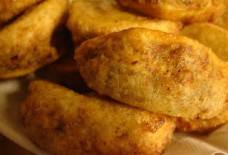Traditional Shoes of the Arab World
By: Lindsey Penn / Arab America Contributing Writer
Shoes may seem insignificant because we wear them every day, but the reality is that they can provide an into a culture. Before the spread of the more “typical” shoes we see such as sneakers, boots, and heels, each country had (and most still have) traditional shoes. Those shoes may have gone “out of style”, but people still wear many of them for special occasions. The Arab world is no different. Morocco’s babouche shoe is more common, but there are many other countries that have classic shoes and styles.
Morocco: The Babouche
Also known as the balgha, the babouche is a leather slipper and is one of the most important parts of traditional Moroccan dress. It is made of soft and flexible leather, and then usually dyed, embroidered, beaded, or even have patches of other material such as wool. To make the leather, the manufacturer uses cow skin, goatskin, or camel skin, which they clean thoroughly and leave it to dry for multiple days until it gets soft. Typically, the shoes are very colorful between the dyes, the embroidery, and beads.
There are two kinds of babouche: one is made by hand, and the other is made by machine. Slippers made by hand are still more popular among Moroccans, as they can be more customizable and fit the customer’s needs better. The slippers made by hand are the more traditional shoe. Many cities in Morocco have factories or stores that will make the babouche, but Fez has the largest share in the traditional babouche market. In Fez, there is one of the oldest traditional shopping centers in all of Morocco, called the Kayseriat al’Kifah. Inside this market, there is the Souk Essabat, which is a market entirely devoted to shoes.
The babouche is worn throughout the country, although they are usually for celebrations where another traditional Moroccan dress is worn. The shoes could also have a flat back to them to make them easier to take off when entering a mosque.
Yemen’s Scorpion Shoes
Named for the functionality and not for the design, people wear scorpion sandals to protect the feet from scorpions and other harmful animals in the desert. The shields on the toes are meant to flap when walking so that it scares away scorpions and snakes. Scorpion shoes are historically made completely of leather, although now they tend to have a metal buckle to adjust the fit.
The scorpion shoes are mainly worn in the desert in Yemen, although the shoes are also popular in Saudi Arabia. They are still commonly worn today when someone is working in the desert.
Syrian Shoes: The Qabqab/Ub-ab
The gabgab is native to Syria, although it has different styles throughout the Levant and in Turkey. What makes the qabqab so unique is that it is made of wood, and is much taller than other shoes. For example, a qabqab can be up to 26 cm (about 10 inches) high. The shoe is still flat, so the height is from “stilts”-one in the front of the shoe and one in the back. Its name comes from the sound that it makes when a person is walking in them. To be secure, the shoe has two straps for the foot to go into. Even then, though, it is likely that the wearer needed another person to help them walk across the floor.
The qabqab is also incredibly decorated. Some of the decorations can include carvings, pearl inlays, pewter inlays, velvet, and embroidery. A qabqab can even have bells or metal plates on them. This makes them very versatile in terms of being customizable, and generally, the customer did personalize the shoes.
Historically, wealthy women were the ones wearing the qabqab. The higher the shoe, the more the woman needed more than one attendant or servant, turning the shoe into a symbol of status. Originally, people would wear these shoes in a bathroom. This meant that the woman would be able to stay away from the dirty and wet ground. However, there are now “indoor” qabqabs, which are mainly a status symbol.
The Libyan Tarkasin
The tarkasin is another shoe made of leather. The leather can be dyed a vibrant red and is usually heavily embroidered. Each slipper is hand-stitched, and the tongue is cut into the shape of the khamsa, or Hand of Fatima, to protect the wearer from the evil eye. The tarkasin can also have metal studs along the sides of the shoe, meant to ward off harmful forces.
Traditionally, a bride wears the tarkasin on the day of the wedding.
Check out Arab America’s blog here!








